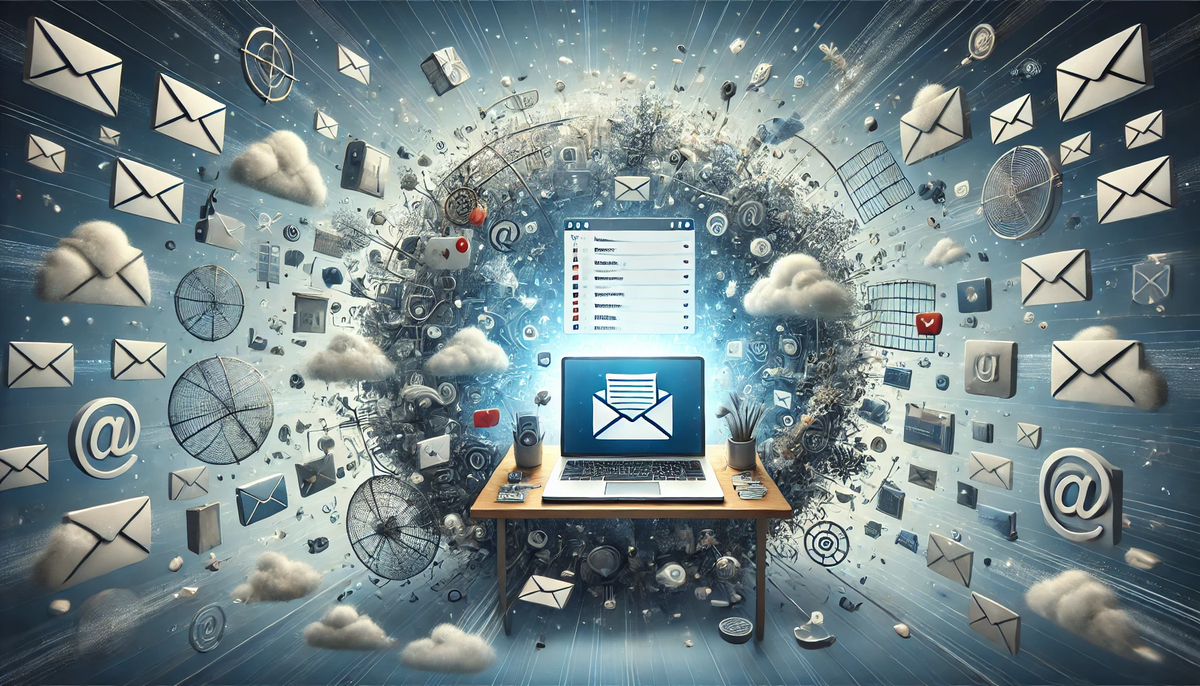Simplifying Email in a Complex Digital World

Hotmail was my first public email service in the late nineties. At the time, I was attending college in Edina, Minnesota, and had just set up my college email account when I decided to create a Hotmail account. Email was still a novelty then; Hotmail had only been around for a few years, and not everyone used it—or even knew what it was. Launched on July 4, 1996, Hotmail and other early email services revolutionized how people communicated.
Fun fact: The name “Hotmail” was chosen because it included the letters HTML, the markup language used to create web pages.
Email quickly became a communication tool for everyone. I used it to connect with family and friends, and it felt magical—this was before people realized its potential for abuse and created what we now know as spam.
Fast forward to today, and email, while still widely used, is often seen as a legacy communication tool, especially by younger generations who favor more immediate platforms. Yet, I find email perfect for business communication. Its asynchronous nature allows time to craft thoughtful responses, making it less distracting than instant messaging.
The Problem: Too Many Email Accounts
Despite its enduring utility, managing email can become overwhelming. Many of us juggle multiple accounts—I certainly do. Currently, I have too many: several Gmail accounts, a few Outlook accounts, and many tied to custom domains. My goal is to simplify this by consolidating my accounts into just three: one for personal, one for professional use, and another for online signups.
To achieve this, I plan to transition away from Gmail and Outlook entirely, focusing on my custom domain accounts hosted by an independent email service provider. While the idea of streamlining to a single email system may seem daunting, it’s technically straightforward and risk-free with the right approach. Even services requiring Gmail or Outlook accounts can often be navigated with workarounds.
The Solution: Fastmail for Personal Email
I’ve been using Fastmail for my personal email for nearly three years and have been impressed. While it’s not free, it doesn’t bombard you with ads or mine your data, which makes the subscription fee worthwhile. In my opinion, paying for privacy and a clutter-free experience is a reasonable trade-off.
One limitation of Fastmail is the lack of built-in end-to-end encryption for emails. However, this can be addressed by integrating third-party tools like PGP (Pretty Good Privacy) or S/MIME (Secure/Multipurpose Internet Mail Extensions). Here’s how I am using it and using end-to-end encryption with the Mozilla Thunderbird app and PGP:
1. Using a Third-Party Email Client with Encryption Support:
• Install an email client like Mozilla Thunderbird, which supports PGP or S/MIME.
• Configure it to access your Fastmail account via IMAP or SMTP.
• Use an encryption plugin, such as Enigmail, to handle encryption and decryption.
2. Utilizing Browser Extensions:
• If you prefer Fastmail’s web interface, you can use a browser extension like Mailvelope to enable PGP encryption directly in your browser.
Important Considerations:
• Key Management: Securely generate and manage your encryption keys.
• Recipient Compatibility: Ensure recipients use compatible encryption tools and have shared their public keys with you.
• Feature Limitations: Implementing encryption may limit some features, such as full-text search and message previews, as the server cannot index encrypted content.
For further details, Fastmail explains its stance on PGP encryption here.
Exploring Alternatives
There are many alternatives to free email services, including hosting your own email server. This may sound intimidating, but with the right resources, it’s more feasible than you might think. For instance, this guide provides practical advice on setting up a private email server.
Implementing My Plan
My plan involves three email accounts:
1. Personal Email: For communication with family, friends, and organizations.
2. Business Email: Dedicated to professional and project-related correspondence.
3. Junk Email: Used for online purchases, signups, and situations where an email address is required but doesn’t warrant personal or business accounts.
The goal is to reduce email volume and simplify account management, leading to a more streamlined system.
Exporting Emails from Existing Accounts
I'll export messages I want to keep from my Gmail accounts to offline storage. You can also use services like Hetzner’s Storage Box, which offers various online storage options.
To export Gmail data, Google provides an excellent tool called Google Takeout. This tool allows you to download a copy of all your Google data, including emails. You can also schedule Google Takeout to download your data regularly. Learn more here.
You can also export all of your Outlook messages following these steps.
Final Thoughts
Simplifying email management may seem daunting, but it's entirely achievable with the right tools and strategies. By consolidating accounts, choosing a reliable email provider, and employing efficient storage and encryption solutions, you can make email work for you—not the other way around.
Have a great weekend!




Comments ()